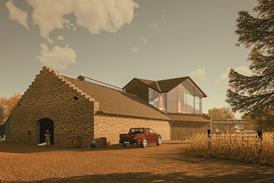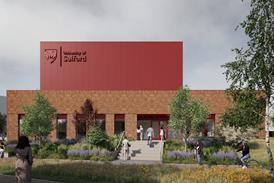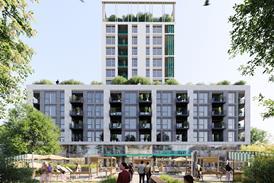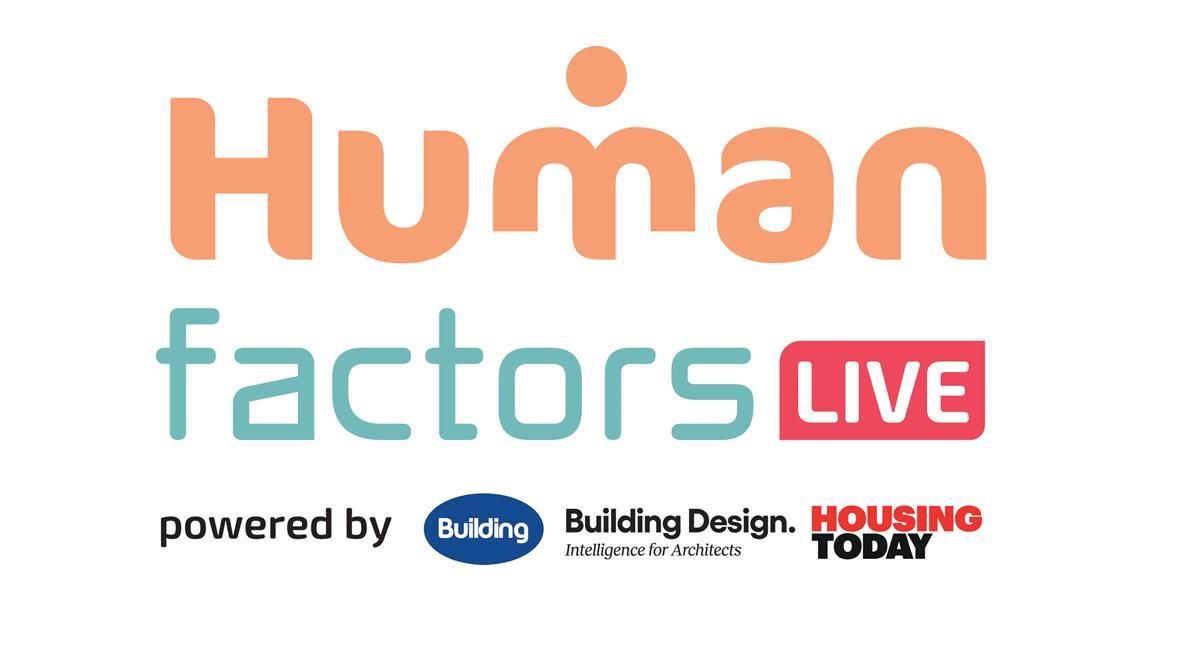Alex Bardett reveals the truth behind riser shaft misconceptions and how correctly specified modular riser flooring can improve fire safety for higher-risk buildings

The Grenfell Tower inquiry has increased focus on fire safety in higher-risk buildings (HRB) – raising the importance of riser shafts in improving safety and reducing fires. Despite this, there are still many misconceptions regarding the significant role of riser shafts.
Fire safety should be a major aspect of building design and construction, regardless of the building. However, the construction industry still faces a lack of understanding from across the sector of the perils of installing combustible materials and the perception that non-combustible materials are more expensive.
As the Grenfell Tower inquiry revealed, the chosen material can significantly impact the spread of fire and smoke throughout the building. Indeed, the 2017 tragedy involved a combustible material being lit and then, among other things, a fire rising in a void and forming a vertical shaft due to the lack of a horizontal fire break.
While fire safety and certification are gaining importance due to upcoming Building Regulation changes, more education is needed on a non-combustible product’s role in improving HRB fire safety.
Fire safety and evacuation provisions, including Approved Document B, are set to change from 2nd March 2025. References to the national classification system for fire resistance, known as BS476, will be removed. Parts 6 and 7 will require construction projects to be classified per EN13501-1, with performance classes A1 and A2 for non-combustible products and B, C, D, and E for combustible products.
Additionally, the relevant duty holder must be given fire safety information when the project is complete or when the building is first occupied.
While the initial cost for non-combustible steel plate materials featuring pre-cut holes for M&E services and covered by a lid will typically be more, that cost will not increase as the project progresses.
Conversely, due to post-installation works, the outlay for combustible GRP grating riser flooring options will typically increase over time. Every floor will require fire doors to prevent the spread of fire during construction and meet codes of practice, while the GRP grating will need holes cut into it to enable services to be fed through, increasing the overall project cost.
Products are often promoted with a BS476 Part 6 & 7 fire rating. This is a measure of the spread of flame and is typical for GRP grating that is used as a riser flooring solution. However, all GRP grating is combustible and will add fuel to any fire occurring in a riser shaft. The Grenfell Tower inquiry found this surface spread of flame test does not measure combustibility, hence the reason for its withdrawal in March 2025.
As the Grenfell Tower inquiry revealed, the chosen material can significantly impact the spread of fire and smoke throughout the building.
Suppose the designed riser flooring product in an HRB is specified as non-combustible at Gateway 2. In that case, contractors may believe the GRP grating has the required ‘fire rating’ and attempt the handover to Gateway 3. Despite its BS476 Part 6 & 7 declaration, it will likely be rejected due to its being combustible.
The main contractor often holds all the risk, especially if they hand the project over to the next person in the chain because they believe the fire rating is correct.
Additionally, suppose a non-combustible class A1 steel riser flooring product is specified in Gateway 2 and replaced by a combustible Class C GRP product. In that case, it will need to be recorded in the change control plan so the relevant teams can consider the impact of these combustibility changes.
It must also be documented before the Building Safety Regulator (BSR) signs off the building for handover at Gateway 3.
The Golden Thread will give anyone involved in a project up-to-date information, ensuring the earlier identification of issues and a better understanding of the fire risks of certain materials. However, awareness still needs significant improvement.
Industry leaders and the government must ensure quality standards and regulations are adhered to, improving the quality of materials used during construction.
Contractors must also know their responsibilities if specified non-combustible products are changed for cheaper combustible alternatives. However, suppliers also play a significant role. Products must be tested and certified to EN13501-1 to enable design teams and contractors to make informed comparisons between products.
Fire safety is a vital aspect of any building’s construction, so increasing awareness of the benefits of non-combustible materials will undoubtedly lead to a safer built environment.
Postscript
Alex Bardett is managing director at Ambar Kelly
















No comments yet